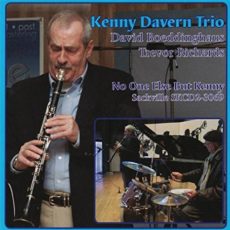
Daily Dose Of Jazz…
Kenny Davern was born John Kenneth Davern on January 7, 1935 in Huntington, Long Island, New York of Austrian-Irish ancestry. After hearing Pee Wee Russell the first time, he was convinced that he wanted to be a jazz musician and at the age of 16 he joined the musician’s union, first as a baritone saxophone player. In 1954 he joined Jack Teagarden’s band, and after only a few days with the band he made his first jazz recordings.
He would later work with bands led by Phil Napoleon and Pee Wee Erwin before joining the Dukes of Dixieland in 1962. The late 1960s found him free-lancing with, among others, Red Allen, Ralph Sutton, Yank Lawson and his lifelong friend Dick Wellstood.
Davern had taken up the soprano saxophone, and when a spontaneous coupling with fellow reedman Bob Wilber at Dick Gibson’s Colorado Jazz Party turned out be a huge success, one of the most important jazz groups of the 1970s, Soprano Summit, was born. The two co-led the group switching between the clarinet and various saxophones, and over the next five years Soprano Summit enjoyed a very successful string of record dates and concerts. When the group disbanded in 1979, he devoted himself to solely playing clarinet, preferring trio formats with piano and drums.
He revived his collaboration with Bob Wilber in 1991 and the new group was called Summit Reunion. Leading quartets since the 1990s, Kenny preferred the guitar to the piano in his rhythm section, employing guitarists Bucky Pizzarelli, Howard Alden and James Chirillo. He appeared numerous times at the Colorado Springs Invitational Jazz Party; in 1997 he was inducted into the Jazz Hall of Fame at Rutgers University, and in 2001 he received an honorary doctorate of music at Hamilton College, Clinton, New York.
Mainly playing in traditional jazz and swing settings, he ventured into the free-jazz genre collaborating in 1978 with avant-garde players Steve Lacy, Steve Swallow and Paul Motian that produced the album titled Unexpected. He also held an ardour and knowledge of classical music. Clarinetist Kenny Davern passed away of a heart attack at his Sandia Park, New Mexico home on December 12, 2006.
![]()
#preserving genius

Daily Dose Of Jazz…
Reuben Radding was born on December 29, 1966 in Washington, DC and began his musical career in the DC punk scene. After moving to New York City in 1988, he studied double bass with Mark Dresser and composition with Edgar Grana, who were strong influence on his musical development as well as William Parker.
He played in various genres from avant-garde jazz to swing, folk, pop, Klezmer and chamber music with musicians such as John Zorn, Elliott Sharp, Anthony Coleman, Andrea Parkins, Dave Douglas, Roy Campbell and Rashid Bakr. With Marc Ribot he toured Europe and Canada in 1995 and leading his own band Myth Science, he played compositions by Sun Ra. He recorded the album Love in Outer Space at the Knitting Factory. Radding co-founded the experimental trio Refuseniks with John Hollenbeck and Ted Reichman .
By early 1997 he moved to Seattle, Washington playing in the trio of alto saxophonist Wally Shoup, and performing improvisationally with musicians Saadet Türköz , Carlo Actis Dato and Wolfgang Fuchs . In 2001 he performed in a duet with Daniel Carter on the Earshot Jazz Festival, and in 2003 gained international notoriety with his release of Luminescence.
He has recorded albums with Ursel Schlicht , Stephen Gauci, Carlos Bechegas, Nate Wooley, Mary Halvorson, Frank London and Tomas Fujiwara. Currently back in New York, bassist Reuben Radding performs and records with his trio comprised of vibraphonist Matt Moran and clarinetist Oscar Noriega, as well as with an improvising trio with Tara Flandreau and Carrie Shull, and operates Pine Ear Music label.
![]()
More Posts: bass
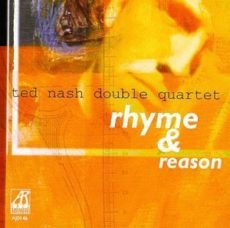
Daily Dose Of Jazz…
Ted Nash was born December 28, 1960 in Los Angeles, California. His trombonist father, Dick, and reedman uncle Ted, were both well-known jazz and studio musicians and both exposed and encouraged the young man. He started playing the piano at seven, by 12 the clarinet, and a year later he picked up the alto saxophone. In high school he studied jazz improvisation with vibraphonist Charlie Shoemake and had his first gig when he was This was followed by a week with Lionel Hampton in Hawaii.
Ted went on to win an audition to play lead alto with the Quincy Jones band, and by the time he turned 17 he had toured Europe, appeared on three records, and was performing regularly with the likes of Don Ellis, Louie Bellson and Toshiko Akiyoshi, as well as leading his own quintet. The following year he moved to New York City, recorded Conception, his debut album as a leader for the Concord label and became a regular member of a variety of ensembles. He worked with the Gerry Mulligan Big Band, the National Jazz Ensemble and for ten years would be a part of the Mel Lewis Jazz Orchestra.
An accomplished composer his first composition, Tristemente, was recorded by Louie Bellson, he has been commissioned by the Davos Musik Festival in Switzerland to compose works featuring a string quartet in a jazz setting, and commissioned by the Jazz at Lincoln Center Orchestra to compose the well-received Portrait in Seven Shades. It is dedicated to the representation of seven different artists, each in their own movement and was nominated for a Grammy in 2010. The artists were Claude Monet, Salvador Dalí, Henri Matisse, Pablo Picasso, Vincent van Gogh, Marc Chagall, and Jackson Pollock.
Composer and alto saxophonist Ted Nash leads an eclectic group called Odeon, and is a member of the Jazz Composers Collective along with Ben Allison, Frank Kimbrough, and Michael Blake.
![]()
More Posts: saxophone
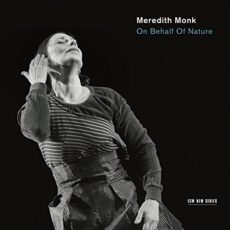
Daily Dose Of Jazz…
Meredith Jane Monk was born November 20, 1942 in New York City and her mother was a professional singer in the popular and classical genres. Known primarily known for her avant-garde vocal innovations with a wide range of extended techniques, she first developed them during her solo performances prior to forming her own ensemble.
By the end of 1961 she was solo dancing on Off Broadway in the Actor’s Playhouse production of Scrooge, graduated from Sarah Lawrence College in 1964 and four years later founded The House, a company dedicated to an interdisciplinary approach to performance. 1978 saw her forming Meredith Monk and Vocal Ensemble to explore new and wider vocal textures and forms, which often were contrasted with minimal instrumental textures.
Monk began a long-standing relationship with the Walker Art Center of Minneapolis, Minnesota, as well as with the ECM record label that released her debut album in 1981. She has written and directed two films, Ellis Island and Book of Days, composed an opera called Atlas, has written pieces for instrumental ensembles and symphony orchestras, and composed Stringsongs for string quartet, commissioned by the Kronos Quartet. She has worked with Björk, Terry Riley, DJ Spooky, Ursula Oppens, Bruce Brubaker, John Zorn, Alarm Will Sound, Bang On A Can All-Stars and the Pacific Mozart Ensemble.
Meredith has received a MacArthur Fellowship, the Creative Capital Award, honorary Doctor of Arts degrees from Bard College, the University of the Arts in Philadelphia, the Juilliard School, the San Francisco Art Institute and the Boston Conservatory.She received the Demetrio Stratos International Award for musical experimentation in Italy and U.S. President Barack Obama presented Monk with a National Medal of Arts, the highest honor in the United States specifically given for achievement in the arts.
Avant-garde vocalist, composer, performer, director, filmmaker and choreographer continues to record extensively and create multi-disciplinary works combining music, theatre and dance.
![]()
More Posts: vocal
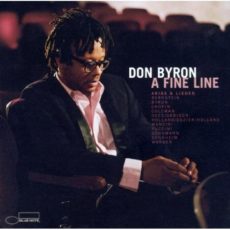
Daily Dose Of Jazz…
Donald Byron was born November 8, 1958 in The Bronx in New York City. His mother was a pianist and his father played bass in calypso bands. As well as listening to jazz recordings by Dizzy Gillespie, Miles Davis and others, he was exposed to other styles through trips to the ballet and symphony concerts.
He studied clarinet with Joe Allard and studied music at the New England Conservatory in Boston with George Russell. While in Boston, Byron performed and recorded with the Klezmer Conservatory Band, founded by NEC faculty member Hankus Netsky.
A gifted performer on clarinet, bass clarinet and saxophone, but on many of his albums he subordinates his own playing to the exploration of a particular style. Don is representative of a new generation of conservatory-trained jazz musicians who explore and record in a rich array of styles. His debut album in 1992, Tuskegee Experiments, bring classical avant garde and jazz improvisation together, while his albums like Ivey Divey are a more straight-ahead exploration of the traditional jazz, for which he has been nominated for a Grammy Award for his bass clarinet solo on I Want To Be Happy.
A practicing jazz historian and educator Byron recreates in spirit forgotten moments in the history of popular music with albums like Plays the Music of Mickey Katz and Bug Music. He has held professorships at Metropolitan State University of Denver, The University at Albany and MIT teaching composition, improvisation, music history, clarinet, and saxophone.
In 2001, Byron performed for the Red Hot Organization’s compilation album Red Hot + Indigo tribute to Duke Ellington, was named a 2007 USA Prudential Fellow and won a Guggenheim Fellowship. He has won the Rome Prize Fellowship and his Seven Etudes for solo piano made him a finalist for the Pulitzer Prize in Musical Composition.
Byron is a member of the Black Rock Coalition, has recorded with Allen Toussaint, Marc Ribot, Vernon Reid, Bill Frisell, Joe Henry, Hamiet Bluiett, Craig Harris, Mandy Patinkin, Ralph Peterson, Reggie Workman, David Murray, Steve Coleman, Bobby Previs, Anthony Braxton, Marilyn Crispell, Cassandra Wilson, Uri Caine and many others.
Composer and multi-instrumentalist Don Byron, who plays primarily clarinet, bass clarinet and saxophones, continues to perform, tour, record and educate, while venturing outside his jazz roots and into klezmer music, German lieder, cartoon jazz, hard rock/metal and rap.
Sponsored By
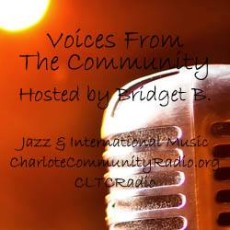
Voices From The Community
![]()



